| Umělec magazine 2011/1 >> Stained clothing, guilty hearts 1 | List of all editions. | ||||||||||||
|
|||||||||||||
Stained clothing, guilty hearts 1Umělec magazine 2011/101.01.2011 Kitty Hauser | cinema | en cs de |
|||||||||||||
|
There’s an epigraph to a chapter of Dick Hebdige’s book Subculture: The Meaning of Style which has always struck me with its visionary intensity and decadent air. It’s a quotation from William Burroughs’ 1969 Wild Boys, a novel which describes an apocalyptic future where gangs of promiscuous, violent and amoral young men trample over the ruins of civilisation. In Marrakesh, writes Burroughs, “the chic thing is to dress in expensive tailor-made rags and all the queens are camping about in wild-boy drag. There are Bowery suits that appear to be stained with urine and vomit which on closer inspection turn out to be intricate embroideries of fine gold thread ...”. There are other sartorial tricks here too: “coolie clothes of yellow pongee silk”, “felt hats seasoned by old junkies”, and so on; but it’s the embroidered stains that burn into the mind.2 What an appalling yet superb recuperation of abjection; what high-stake dandyism. And what artisanal dedication from the tailors and the embroiderers – for it cannot be easy to reproduce dried urine or vomit in stitching.
The stain which on closer inspection turns out to be embroidered-on; it’s a double-take which reproduces the usual double-take of the stain, but reverses its logic. The stain invariably appals before it gets a chance to explain, just like those on the wild-boy Bowery suits; but closer examination usually points to accidental or at least contingent causes. And stains are not supposed to be seen, still less vaunted. We imagine that Jackie Kennedy knew this when she refused to remove the pink suit she was wearing after her husband’s blood was so publicly splattered over it in Dallas that fateful day in 1963. She continued to wear the blood-stained suit for the rest of the day, a fact documented in photographs of her arriving in Maryland and watching her husband’s casket being loaded into an ambulance. When one such photograph was reproduced in the Boston Herald American, bloodstains on her skirt and legs were airbrushed out, as if to restore the First Lady’s dignity, her much-discussed immaculate-ness (immaculatus, from in – not, and maculare – to spot).3 But in not changing her suit Jackie, it seems, was not just traumatised into inaction. She knew she would be photographed, and she wanted the stains to be seen. Through the theatricality of dress in this most public of theatres she had turned her public humiliation (as Wayne Koestenbaum called it) into something else; she was visibly anointed by her husband’s blood, she bore witness to his sacrifice, and she was herself made sacred by it.4 Jackie Kennedy knew in 1963 what, presumably, every other wary celebrity now knows: that stains and photography, stains and film, are in love. Paparazzi photographers and celebrity magazines delight in the sight of a starlet whose exterior is marked by sweat, wine or blood. Such stains automatically draw the eye to the celebrity body, supplying the photographic image with a ready-made punctum.5 Photos of a stained body are assured a double-take (at least). Stains imply a scandal, even if it is only the scandal of mortality, what Philip Roth called “The Human Stain”, revealing itself in the place – the celebrity body – where we have persuaded ourselves to pretend it does not exist.6 Photographs like that of Britney Spears with a damp armpit, or of Mischa Barton, back from the gym, her tracksuit bottoms stained by an apparently leaky tampon, do not really turn us into detectives, as their disingenuous captions invite, and as chat-room discussions suggest.7 Instead we are like Strephon in Jonathan Swift’s satirical poem of 1732, “The Lady’s Dressing Room”, when he discovers that his beloved Celia does, after all, have bodily functions, their evidence encrusted in the arm-pits of her smocks, the toes of her stockings, and – famously – in her stinking chamber-pot.8 Such puerile paparazzi photographs are a function of a historically specific form of celebrity culture, built on an age-old equation (illustrated by the Swift poem) of successful femininity with neatness and the concealment of body fluids. But the relationship between stains and photographic media goes well beyond these market-driven exploitations of it. For the stain performs an invaluable structural role in a photographic image. The stain opens up a photograph to narrative in a very particular way, whether it occurs in a still or moving image. The stain is the visible sign of a story that (for the moment) remains hidden from view. It marks, in a sense, the point at which that hidden story enters the scene. It shows that something has happened here, even if we don’t always know what that something is. It is, in effect, a wormhole of space and time in visible form; and it is the accidental fact of its visibility that makes it so effective in narrative terms. To be sure, paparazzi photographers take a keen interest in this aspect of staining, since it seems to offer peepholes into the most private of spaces which they consider it their job to penetrate. Amy Winehouse’s bloodstained ballet pumps, for example, were touted as the evidence of intravenous drug use between the toes, in a hotel room whose dark goings-on were written on the very bodies of Amy and her husband as they tripped out into the night. Stains speak, like scars, and wounds, even when the human beings that sport them will not. For this structural reason, and for many others, stains play an important role in film and television drama, especially in narratives where there has been some kind of a cover-up. They may suggest hidden trap-doors of meaning; they can connect a scene with other, invisible ones, scenes that have taken place off-camera, out of the sight of audience or protagonist. To cite an archetypal scene of the criminal narrative, for example, the woman who believes her lover to be innocent of a crime finds his bloodstained shirt, and is forced to think again. Or a spreading stain on a hero’s chest suggests to the audience that the man who is pretending that everything is all right has been fatally wounded. In scenes like these the stain suggests that not everything is as it seems. The stain is both a visible reality in a scene – a mark on a collar, or a petticoat, or a bed sheet – and evidence of something else, part of a chain of events which for the time being remains obscure. So concise is it in its complexity that Pascal Bonitzer, discussing Hitchcock’s films, used the image of the blot, or stain, to characterise a particular element in a cinematic scene which draws the eye, and disturbs an apparently natural order. “Everything is proceeding normally,” writes Bonitzer in Slavoj Žižek’s book, “according to routines that are ordinary, even humdrum and unthinking, until someone notices that an element in the whole, because of its inexplicable behaviour, is a stain. The entire sequence of events unfolds from that point.”9 The stain is the point of anamorphosis, suggests Miran Božović in the same collection of essays, referring his readers to Holbein’s 1533 painting (a favourite of Jacques Lacan’s), The Ambassadors.10 The anamorphic “spot” in that painting seems to be a blur, until it is viewed from the side, when it reveals itself to be a human skull; the presence of the skull changes the meaning of the apparently straightforward portrait of the two men. The Hitchcockian stain, like this skull, “sticks out”. To follow it is to disturb the perspective of the scene in which it appears, discovering that there is more to the reality of that scene than meets the eye. The blot, or stain, in Hitchcock’s films can in fact be just about anything; it need not be an actual stain. In Foreign Correspondent (1940) it is a windmill in a field of tulips that is uncannily rotating against the direction of the wind. In North by Northwest (1959) it is a speck in the sky that turns out to be a plane. But sometimes it is an actual stain. In Stage Fright (1950), writes Žižek, it is the stain on the front of Charlotte’s dress which disturbs an otherwise unremarkable scene. In Marnie (1964), we experience a “blot” through the film’s eponymous heroine. For her it is the colour red, referring back to a childhood trauma in which the image of a bloodstained shirt burned into her memory. At one point in the film Marnie spills bright red ink on her pristine white blouse as she sits at her office desk. We see the ink fall, and form a spot on her sleeve; the entire screen turns red as we witness her horror. Then, in a shot taken from above, we look down on the stain as Marnie does, before she rushes to the bathroom to wash it off. When a concerned colleague asks her if she is all right, she plays the incident down, insisting that she is just cleaning her blouse. But the cinema audience knows that there is far more to it than that. Marnie’s reaction to the stain suggests a serious disturbance behind the poised figure she has tried so hard to cultivate. By the end of the film we know what that disturbance is, and why a white blouse spotted with red ink might trigger it. A flashback sequence shows how as a young girl, Marnie defended her mother by beating her aggressor, a sailor, around the head with a metal fire iron. It was the image of the dying sailor’s white undershirt, stained with bright red blood, that stayed with Marnie long after she had erased the traumatic memory of her mother’s attack and the sailor’s murder. What remained was an apparently unaccountable fear of anything red. Unsurprisingly, perhaps, Hitchcock is a master of the stain, fully alert not only to the range of its uses as a cinematic device, but also to its rich metaphoric range in both psychological and theological terms. The stain, after all, stands as the very image of the eruption of something that ought to have remained contained, something that needs to be cleaned away, and so Marnie scrubs at her sleeve, and Norman Bates cleans up the bathroom after the murder in Psycho (1960). And the association of the stain with sin – especially for women – goes deep in Judeo-Christian culture. Hitchcock knew that the stain is a metaphor as well as a reality. The bloodstains that appear in Stage Fright, Psycho, The Birds (1963) and Marnie – to name just a few – are not just ways of indicating wounds or accidents. They have a psychic reality for protagonists and audience alike, thanks to Hitchcock’s direction and his careful staging. Care was taken in Marnie, for example, to get just the right contrast between the pristine whiteness of the sailor’s undershirt and the blood that stained it. And so anxious was Hitchcock about the ink-blot scene, that he re-shot Marnie’s sleeve from above so that the film’s viewer sees the stain from the same perspective as she does, and feels her fear.11 There are other directors with a feel for stains – the Coen brothers, for example; or, in a different vein, Tarantino. In lazier hands, though, the stain does not always resonate in so many registers. Stained clothing – especially clothing stained with blood – is both ubiquitous and, on the whole, unmemorable in the millions of thrillers, murder mysteries, police and hospital dramas on the screen, where it does routine work identifying victims and assassins, suggesting guilt, misleading protagonists and so on. When forensic science comes into the frame, as it does in the CSI TV franchise (Jerry Bruckheimer Television), stains (along with other marks, scuffs and traces) move to centre stage. Here, they might be stripped (more or less) of metaphoric resonance, but they certainly work hard for their money in other ways.12 CSI dramatises the work of forensic scientists in solving criminal cases – typically murders. It is based on a fantasy of the absolute legibility of evidence, given the right expertise and state-of-the-art technology. So expert are the CSI workers that to them every stain tells a story. Thanks to techniques of bloodstain pattern analysis (or BPA), they can tell just from looking at a stained vest how the blood got there, from where, travelling at what speed, and so on. DNA analysis of the stain can identify the blood’s owner (or owners). The crime scene investigation aims to reconstruct a criminal act precisely from the traces it has left behind, and it invariably (almost miraculously) succeeds. And so the stain indicts, it threatens to blow the murderer’s cover; to the supernaturally skilled analyst it effectively spells out his (or her) name. CSI relies, for much of its affective power, on the juxtaposition of the aftermath of horrific crimes, explicitly represented, and the clinical operations of forensic science and computer technology. It offers reassurance that “science” will work it all out, however unpromising the material (one episode shows half a corpse – hardly recognisable as such – stuck to the bottom of a transport container).13 The show’s detectives and coroners have always “seen it all before”, and generally respond to the most degraded of human spectacles accordingly. But we, the viewers, are bound to respond differently; we enjoy both the frisson of horror and the satisfaction of seeing a seemingly intractable case solved. And here we come to another property of the stain in film. A stained garment might serve as a narrative device, it might signify repressed trauma (as in Marnie), or sin, or it might operate as evidence in a criminal investigation, as in CSI. But it surely remains the case that in the very first instance we tend to respond to stains on film or television as we might respond to them in real life. Stains evoke shock, alarm, disgust or dismay – primal things – before they become proof or symbol of something in some narrative. We respond to them more or less instinctively before we apprehend their cause. Again, this fact can be manipulated by a director or cinematographer; think of Pulp Fiction (1994). When it comes to stained women, the possibilities multiply. In Stage Fright, Johnny opens the door to Charlotte (Marlene Dietrich), who opens her coat (all of these openings are key to the scene’s power) to reveal a large dark stain on the front of her dress. We don’t yet know the cause of the stain, or the reason for her urgency. What we hear is a dramatic chord, with Dietrich’s low voice saying “Johnny you love me, say that you love me. You do love me don’t you.” What we see, framed by the door, and the coat, is the stain. The stain fills the visual field; it’s impossible to look at anything else, and it’s a horrifying sight. It emerges a few moments later that there has been a murder, and that it is the blood of Charlotte’s husband that has stained her dress. Later still – much later – we discover that the entire scene (a flashback sequence) is a fabrication, and that the stained dress that Johnny keeps as evidence has been faked by him to conceal his own guilt. But none of this is immediately evident from the stain itself, in the scene in which it first appears. A similar scene occurs in Hush… Hush, Sweet Charlotte (1964), the gothic melodrama directed by Robert Aldrich a couple of years after What Ever Happened to Baby Jane? (1962). It is the night of a ball in Charlotte’s father’s house. Out in the summerhouse, Charlotte’s lover has told her that their affair is over. Then there is a scene in which we witness his bloody murder (his head and hands are chopped off with a meat cleaver), but we do not see who is responsible. The scene shifts to the ballroom; a jazz band is playing, people are chatting and dancing. Charlotte slowly enters the room; at first she is in shadow. As she turns into the light the crowd fall silent and the band stops playing. There is a stain on the front of her party-dress – in a similar position to Charlotte’s in Stage Fright – and it seems to turn the ball-goers dumb with fright or consternation. In both films the stained dress is cinematically very powerful. In both cases the woman’s dress is white, and glamorous (Dietrich’s gown is Dior – she apparently insisted on it), and so the bloodstain is highly visible; a kind of desecration, as it were (appropriate in the case of Hush… Hush, since Charlotte is wearing the traditional dress of the young debutante). In both films it is suggested that the stained woman has committed a murder, although in both films this turns out not to be true. But in both cases the first time we see it, and before we know its cause, the stained garment is framed in such a way so as to provoke other reactions from the viewer, and invoke other associations. In both cases what we see is a woman, clearly disturbed, showing her bloodied skirts in public. And the consternation the bloodied dress causes us (like the party-goers in Hush... Hush) is surely due to its association not only with injury but with menstruation. Menstruation, after all, is a public secret which has to remain hidden (the successful woman, like the successful criminal, does not show any stains). Freud, of course, associated menstruation with castration; and in fact the position of the bloodstain (whether by accident or design) is in both cases in just about the right spot for such a suggestion. Whatever the cause, the fact is that in both films, the image of the stained woman is both powerful and ambiguous; we do not know the source of the blood that marks her, and for a moment we – like the revellers in Hush... Hush are turned to stone by its presence. In Brian De Palma’s 1976 film Carrie, the image of the bloodied woman is used to rather different effect. In the famous final scene, Carrie is drenched in pig’s blood just after she has been crowned prom queen. In this case there is no mystery about the source of the stain. She has been the victim of a cruel practical joke, referring back to the time when she began menstruating rather publicly in the school shower. Just as in Hush... Hush, the party goes quiet faced with the desecration of the new prom queen, resplendent just a few moments before in her white dress. The blood is thick, and dark, and Carrie is unusually pale. Some of the revellers start to laugh at her. But Carrie has telekinetic powers, associated with her monthly period; and after being doused with blood she turns her powers on the prom-goers, with devastating results. Something of Carrie’s power is echoed in the video game Killer 7, in which a character named Kaede Smith, identifiable by her blood-spattered white tunic, is an assassin capable of getting ahead by shooting forth showers of blood. Kaede, like Carrie, and like Jackie Kennedy even, succeed in turning the signs of abjection into power. Finally, we might spare a thought for the stain-makers in cinema and television. Horror films give scope for an expressionist artistry in blood, nowhere more than in the Giallo films of Dario Argento and others, where special effects artists can drip and spray red fluids around with the freedom of a Jackson Pollock. But in film and television shows where the stain is in some way evidential, its fabrication must be painstaking, especially in a post-CSI context which has made amateur BPA experts of us all. The stain-makers have to create marks that look authentic, that are believably contingent. As Georges Didi-Huberman writes (in relation to the Turin shroud, the most famous stained garment of them all), the stain must be non-iconic and non-mimetic to insure its value as an index.14 And not only must stains in a filmic criminal narrative look convincingly contingent, they must remain so in all of the scenes in which they appear. The precise nature of their contingency must remain constant. Stains are often cited as “bloopers”, continuity faults in which a stain has a particular appearance and location in one scene, and inexplicably alters its shape, size, colour or location in another one. DVD viewers with time on their hands have found such stain-bloopers in films and TV shows including Star Trek II: The Wrath of Khan (Nicholas Meyer, 1982), CSI and Lost (ABC Studios, 2004-).15 Faults have been found in Carrie, too, where stains that appear in one scene change shape or disappear in the next. To an extent, stains surely lose their impact once we see them as things made by studio hands, using chocolate sauce (as in Psycho), paint, or coloured corn syrup. But the real test is first impact. Tippi Hedren apparently vomited after seeing what make-up artist Howard Smit had done to her for her role in The Birds; proof, if true, of the visceral power of the well-placed scar or stain, even when we know it to be faked.16 Originally published in: Marketa Uhlirova, ed. If Looks Could Kill: Cinema’s Images of Fashion, Crime and Violence, Koenig Books and Fashion in Film Festival, London, 2008. 1 Thanks to Alan Cholodenko, Ian Christie, Susie Cole, Eve Dawoud, Ursula Frederick, Robert Herbert, Martyn Jolly, Joanne Kernan, Louise Marshall, Rita Revez and Marketa Uhlirova. 2 William S. Burroughs, The Wild Boys: A Book of the Dead (London: Corgi, 1972), p.51. Quoted in Dick Hebdige, Subculture: The Meaning of Style (London: Methuen, 1979), p.23. Burroughs’ novel was the inspiration for the 1984 Duran Duran song of the same name. 3 “Somehow that was one of the most poignant sights,” wrote Lady Bird Johnson, wife of Lyndon Johnson, “that immaculate woman exquisitely dressed, and caked in blood” [my italics], A White House Diary (New York, Chicago and San Francisco: Holt, Rinehart and Winston, 1970), p.6. 4 Wayne Koestenbaum, “Jackie’s Humilation” in Jackie Under My Skin: Interpreting an Icon (New York: Plume, 1996). 5 The term comes from Roland Barthes, who uses it to describe a “sensitive point” in a photograph, an “accident which pricks me (but also bruises me, is poignant to me)”, Camera Lucida, trans. R. Howard (London: Flamingo, 1984), p.27. 6 In Roth’s novel, Faunia Farley describes the nature of the “human stain”: “We leave a stain, we leave a trail, we leave our imprint. Impurity, cruelty, abuse, error, excrement, semen – there’s no other way to be here,” The Human Stain (London: Vintage, 2001), p.242. 7 A photograph entitled “Britney’s Mysterious Armpit Stain” appeared in The Sun on 30 September 2007; the “mystery” was the fact that only one armpit was stained. Was it sweat, the readers were asked, or a stain from the can of drink she was carrying? 8 The poem is famous for its line: “Oh! Celia, Celia, Celia shits!” 9 Slavoj Žižek (ed.), Everything You Always Wanted to Know about Lacan (But Were Afraid to Ask Hitchcock) (London and New York: Verso, 1992), p.20. 10 Slavoj Žižek, Looking Awry: An Introduction to Jacques Lacan through Popular Culture (Cambridge MA: MIT Press, 1991), p.90. 11 See Tony Lee Moral, Hitchcock and the Making of Marnie (Lanham, Maryland and Oxford: Scarecrow Press, 2002), pp.47, 126. 12 CSI stands for Crime Scene Investigation. The original series was created by Anthony E. Zuiker and began in 2000. 13 This has resulted in what is known as the “CSI effect”, in which public expectations of the capabilities of forensic science become seriously unrealistic. 14 Georges Didi-Huberman, “The Index of the Absent Wound (Monograph on a Stain)” in October: The First Decade, 1976-1986, eds. A. Michelson, R. Krauss, D. Crimp and J. Copjec (Cambridge MA and London: MIT Press, 1987), pp.43-44. 15 See http://www.moviemistakes.com and other websites. 16 Documentary All About the Birds, included on The Birds DVD (Universal, 2005).
01.01.2011
Recommended articles
|
|||||||||||||
|
04.02.2020 10:17
Letošní 50. ročník Art Basel přilákal celkem 93 000 návštěvníků a sběratelů z 80 zemí světa. 290 prémiových galerií představilo umělecká díla od počátku 20. století až po současnost. Hlavní sektor přehlídky, tradičně v prvním patře výstavního prostoru, představil 232 předních galerií z celého světa nabízející umění nejvyšší kvality. Veletrh ukázal vzestupný trend prodeje prostřednictvím galerií jak soukromým sbírkám, tak i institucím. Kromě hlavního veletrhu stály za návštěvu i ty přidružené: Volta, Liste a Photo Basel, k tomu doprovodné programy a výstavy v místních institucích, které kvalitou daleko přesahují hranice města tj. Kunsthalle Basel, Kunstmuseum, Tinguely muzeum nebo Fondation Beyeler.
|







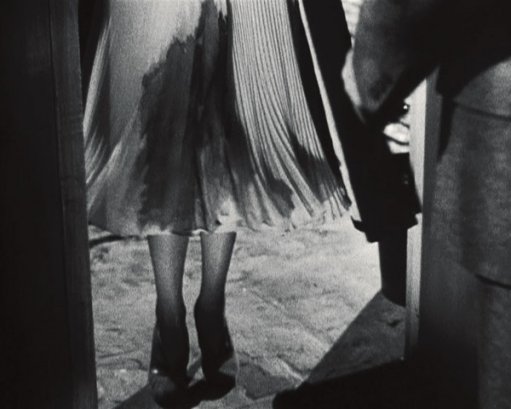
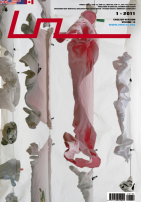















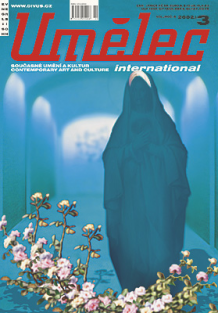





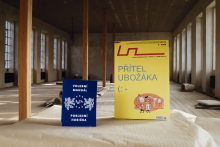
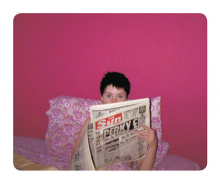
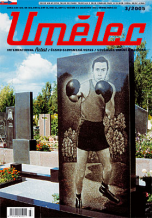


 We Are Rising National Gallery For You! Go to Kyjov by Krásná Lípa no.37.
We Are Rising National Gallery For You! Go to Kyjov by Krásná Lípa no.37.
Comments
There are currently no comments.Add new comment